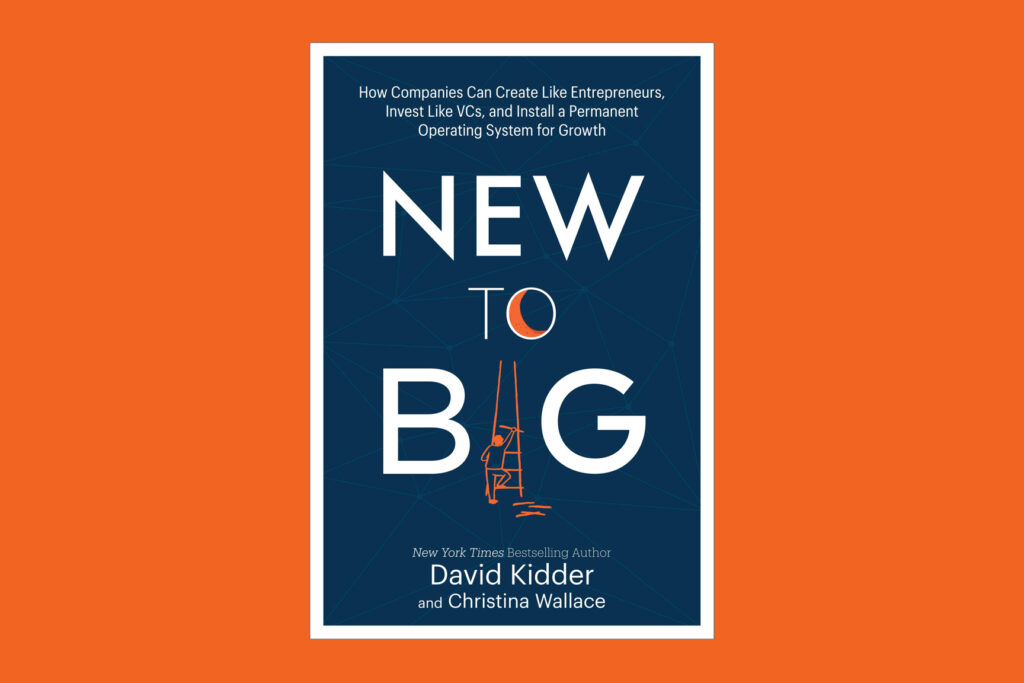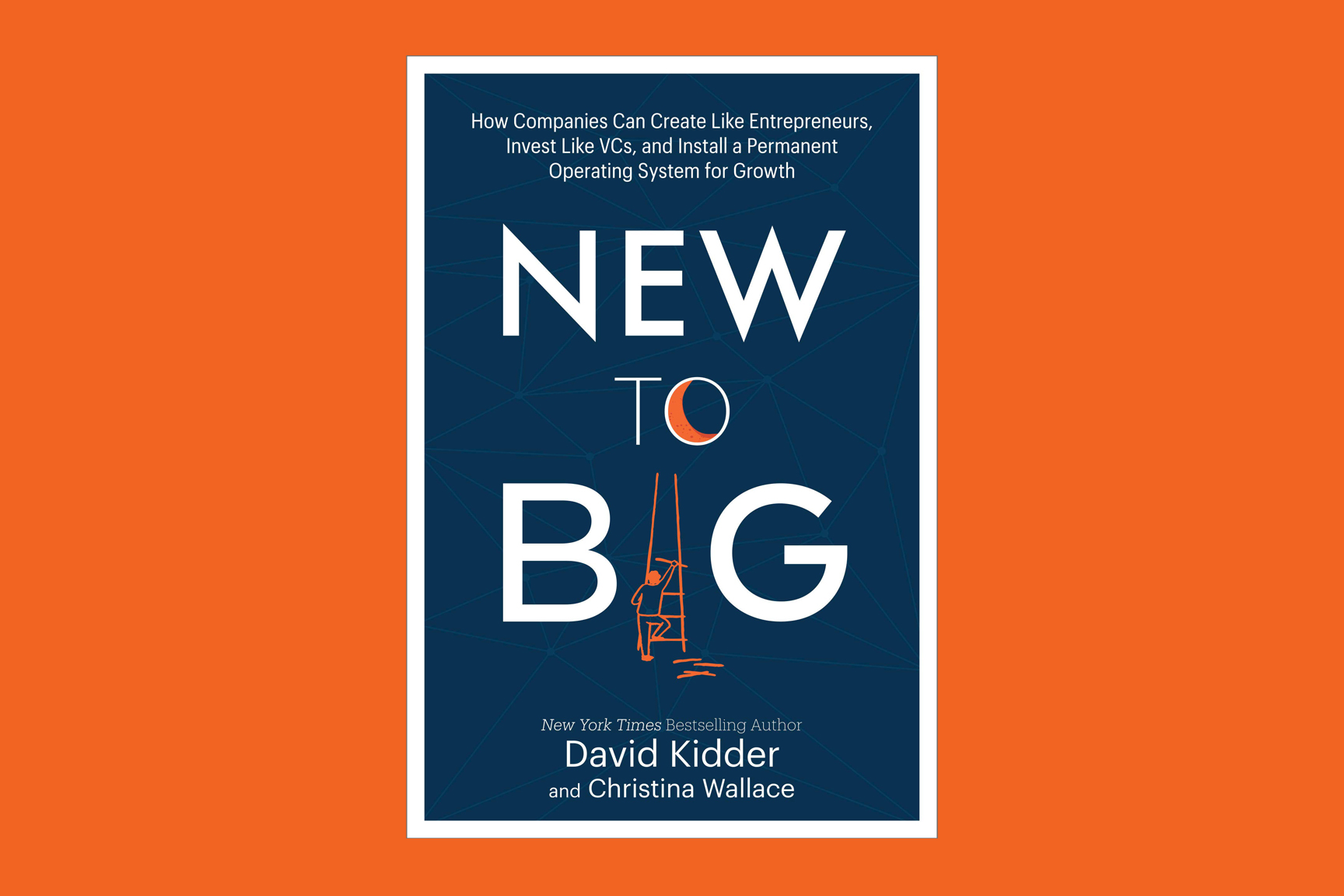New to Big: How Companies Can Create Like Entrepreneurs, Invest Like VCs, and Install a Permanent Operating System for Growth, by David Kidder and Christina Wallace

According to the authors of New to Big, established companies face a challenge: operational efficiency and outdated bureaucracy are at war with new growth. Legacy companies are skilled at growing existing big businesses into bigger ones. But they are less adept at discovering new opportunities and turning them into big businesses in the first place, the way entrepreneurs and early-stage investors do.
In this original new work, David Kidder and Christina Wallace reveal their proprietary blueprint for installing a permanent growth capability inside any company—the Growth OS. The Growth OS borrows the best tools, systems, and mind-sets from entrepreneurship and venture capital and adapts them for established organizations. This is not a theoretical approach, but a framework honed from years of experience in organizations like GE, Tyco, Citigroup and P&G, with lots of real-world examples.
Here are some of our key take-aways:
1) The future is unknowable, and that’s okay
”Future markets, business models, and technologies are largely unknowable. This means any attempts at a planning strategy will fail, because the target is undefined. Instead we need to use a discovery strategy to uncover new customer behaviors, new needs, and emerging or non-existent markets. This is fundamentally about learning velocity, and whoever learns the fastest wins.”
The authors cite Microsoft CEO Satya Nadella as a prime example of New to Big leadership. Nadella pivoted Microsoft from what he called a “know-it-all” culture to a “learn-it-all” culture, and famously reinvigorated a company that had been struggling for 10 years.
2) Operate and innovate on parallel paths
“While it often looks as if world-altering business opportunities emerge by accident, they can, in fact, be discovered and scaled in a methodical way. In the same way an MBA program teaches a form of management for administering and growing existing businesses, entrepreneurship and venture capital are, together, a form of management for discovering and building new businesses. Enterprises need both."
"Together, these dual operating systems give you the power to discover and validate new ideas at the speed and cost of startups, then launch the validated ideas into new businesses at the scale of enterprises.”
3) Customers have the answers, and it’s easier than ever to get to them
“It can feel counterintuitive and awkward to shift focus from our core competencies to the customer’s unmet need, but it’s a shift that reorients our companies toward authentic growth and productive creativity.”
Kidder and Wallace exhort us to “Get out of the building and interact with them, watch them in action, and draw your own conclusions. The evidence we’re looking for is behavior. Not what customers say they want but what they do. Discovery of new problems and needs lives in the realm of active, unreported, authentic customer choices.”
The cost of engaging with customers is dramatically less than it was just a few years ago. If back in the day it was risky, time-consuming and expensive to set up real-world experiments, today we can test consumer demand in a few days for a few thousand dollars.
4) It’s all about people (yours)
One of the most original contributions in New to Big is the chapter on talent; and what HR departments can do to foster a more modern workforce.
“The talent you need to power the Growth OS probably isn’t the talent that’s risen through the ranks already; it might need to be ferreted out. Deep within your organization there are employees with the entrepreneurial sensibilities who are attracted to ambiguity, love to experiment, and are constantly imagining a better way to solve a problem. They are constant learners and are not afraid to challenge deeply held assumptions, which is why they are more often seen as “misfits” rather than candidates for high-potential programs.”
5) And finally: Relax, you're still holding most of the cards
With all the hype and change in the marketplace, it’s easy for incumbents -- especially insurers -- to forget that they have some substantial advantages in their battle with disruptive startups: Loyal customers, massive distribution channels, mountains of historical data, scaling systems and the brand equity that startups and venture capitalists can only dream of.
"You can accelerate a customer adoption curve that startups could never handle. You are in a position to not only see and meet the future, but to make the future happen sooner.”
And now you’re in a better position than ever. The authors don’t claim that it will be easy, but they do demonstrate that it works and they’ve handed us a recipe book with the challenge.
To learn more about New to Big visit https://www.newtobig.com/.
Subscribe to our quarterly email newsletter for the latest insights from our work.
